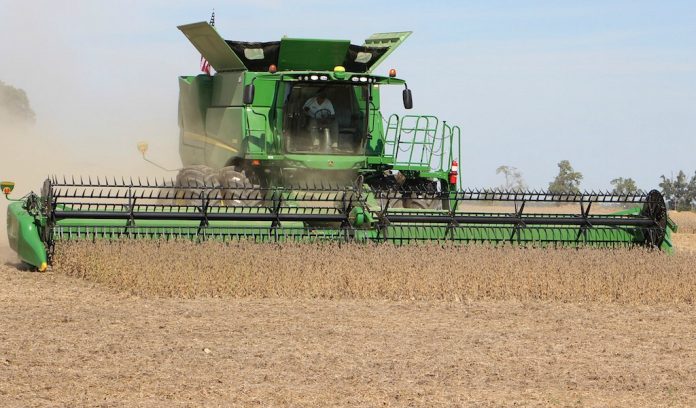It is Tuesday after a long weekend, and anything can happen. Unfortunately, what is happening is lower prices again.
December corn futures are down four cents, at 3.65-3/4, and November soybean futures are down just a half of a cent, but were down more than a dime overnight.
Last week, December corn recovered a little after a run at the December contract low of 3.63-3/4 from May 13. We got within a half-cent of that low, then rebounded to a high of 3.77 Aug. 29.
In the process, we can now identify a double bottom on the December futures chart. That would be a nice, firm signal if this market were not so soft. It would be nice to think we just made a bottom. We have, until we make another one.
Looking to November
November soybean futures, meanwhile, took a dive, but are well above the contract low. Early this morning we traded 8.59-1/4, but were all the way down to 8.15-1/2 on May 13.
Think about what was going on back in May. We got some crops planted in early areas, but mostly none in Ohio because it was still too early. Then, we got delayed.
However, on May 13 we had plenty of optimism that the crops would go in and USDA was talking about a corn crop of over 15 billion bushels.
What has happened since then? Well, the roof fell in over most of Ohio and much of the entire Midwest.
A huge number of corn acres were not planted at all, and some planting was going on in the middle of June. Soybeans were late, and even the early ones have not been growthy.
USDA numbers rule
So, ask yourself, how is it possible that we are now having the same prices that we had when we were optimistic in May? Does it make any sense that we are now talking about a couple of billion fewer corn bushels, but the same prices?
The best that can be said is that the market is trading USDA numbers. Early on the government reacted to the nearly-unprecedented weather by dropping corn yields ten bushels to 166 bpa. Recently they raised that back to 169.5.
By government count, the acres are mostly going to be harvested, and the yields will be close to trend-line. By other estimates, the harvested acres will be well short of government estimates, and the yields will be lower.
Private estimates are of the 166 bpa variety, but some methods give yields of as low as 144, and that assumes the acres all make it.
We know that can’t be true, because I have seen some corn just tasseling in the last week.
That gets us to soybeans, where the effect of late planting versus the recent history of early planting will effect yields more than the government is assuming. I have heard estimates as low as 39 bpa for a national result.
Who is right
Now, the lesson of trading grain is that the government is right. The trend is right. Do not be a hero and disagree. However, there is general feeling among those actually walking fields that the government is wrong.
If I am day trading, I agree with the market. If I am marketing my crop, I remember that in the wet year of 1993 the real rally started very late, and did not end until the January inventory report.
Corn prices have dropped a buck, even while we have been whining about how much trouble the crop is in. November soybean futures have also lost a dollar. I am left with the conclusion that there is no good reason for this, except for suspect numbers in government reports.
Yet, to make matters worse, while I have been writing this, corn futures have indeed made a new low. We are now trading December corn futures at 2.62. How low is low?














USDA, not working for growers. Big Corp food Processors are their Masters.